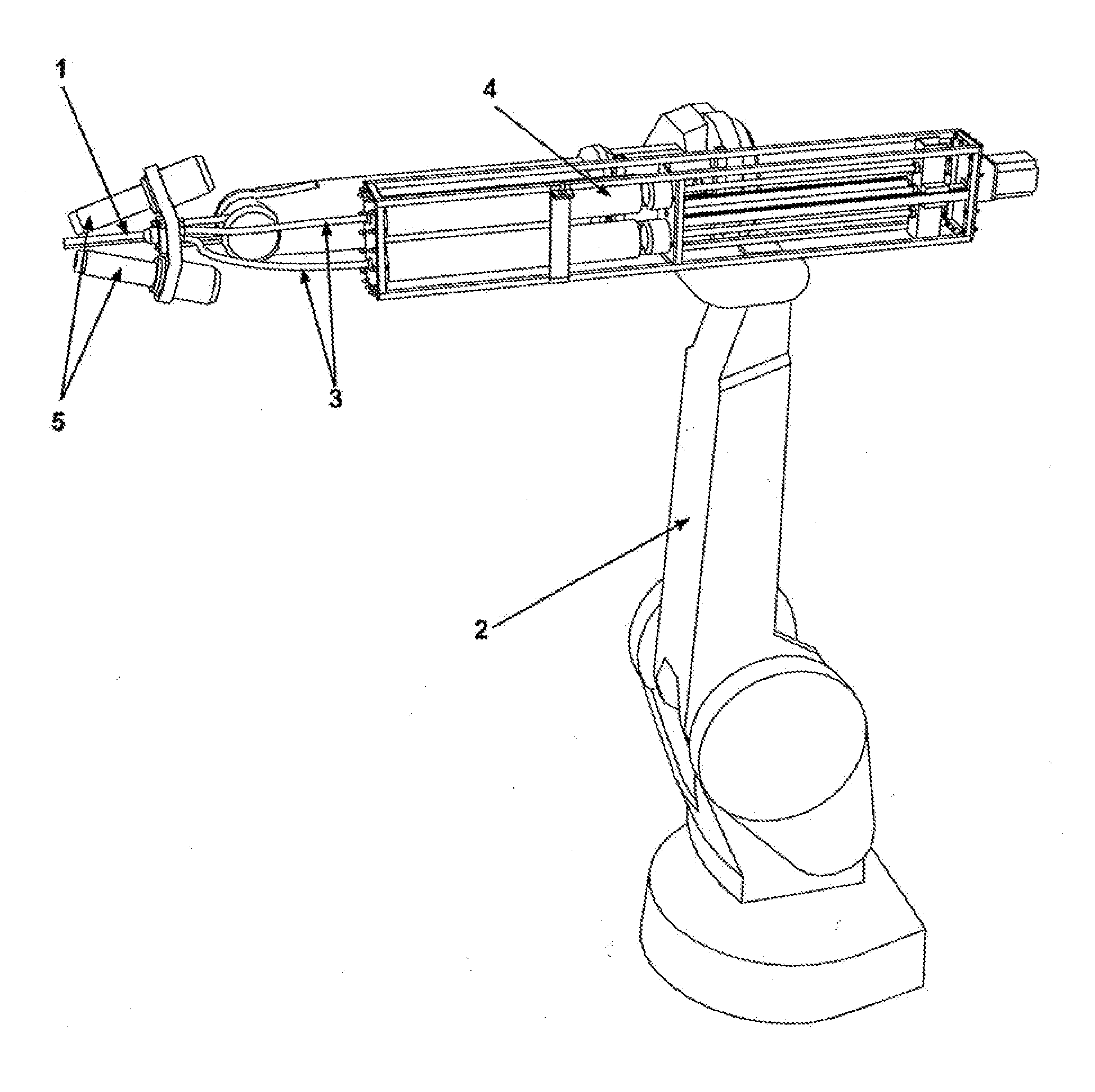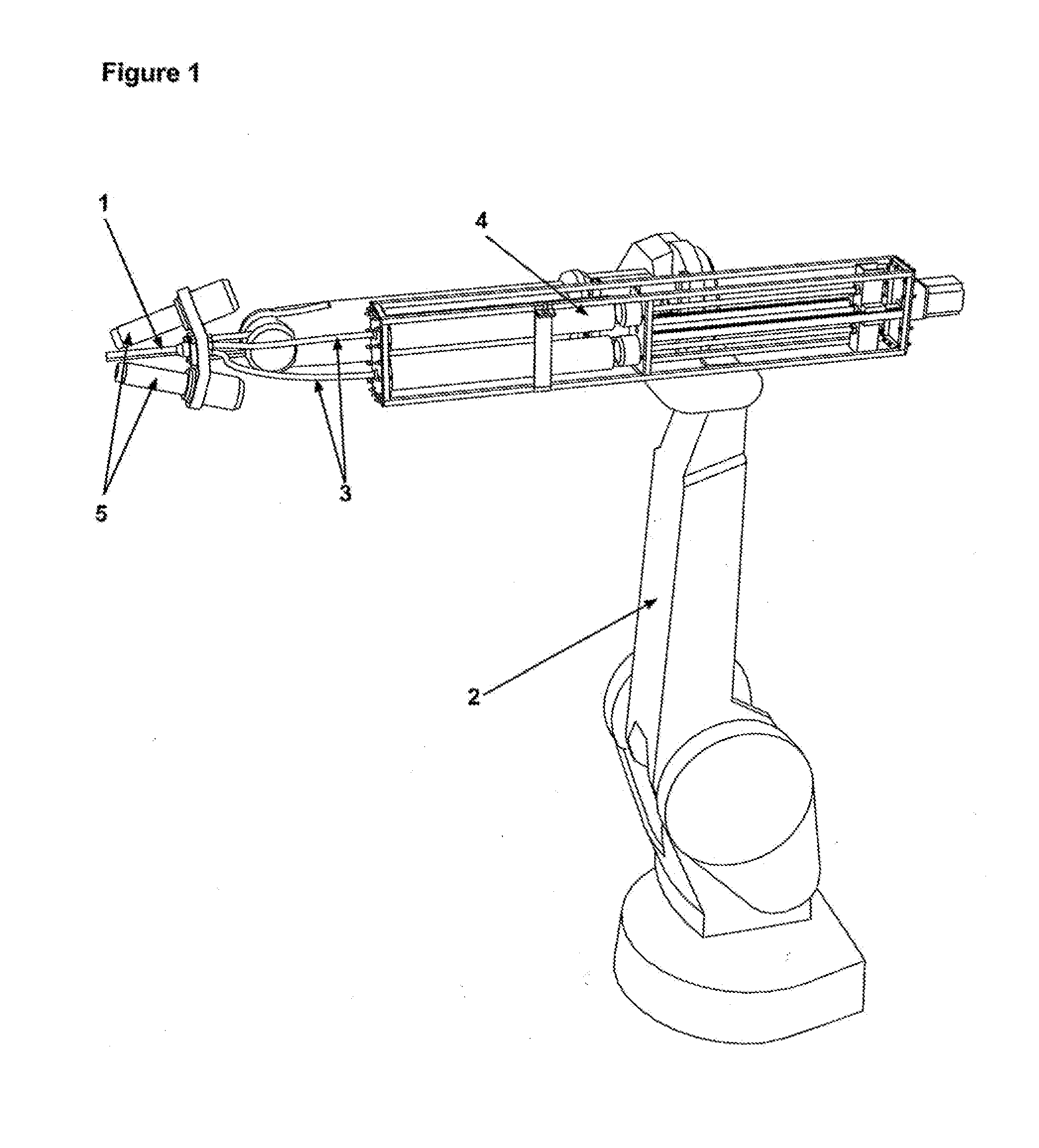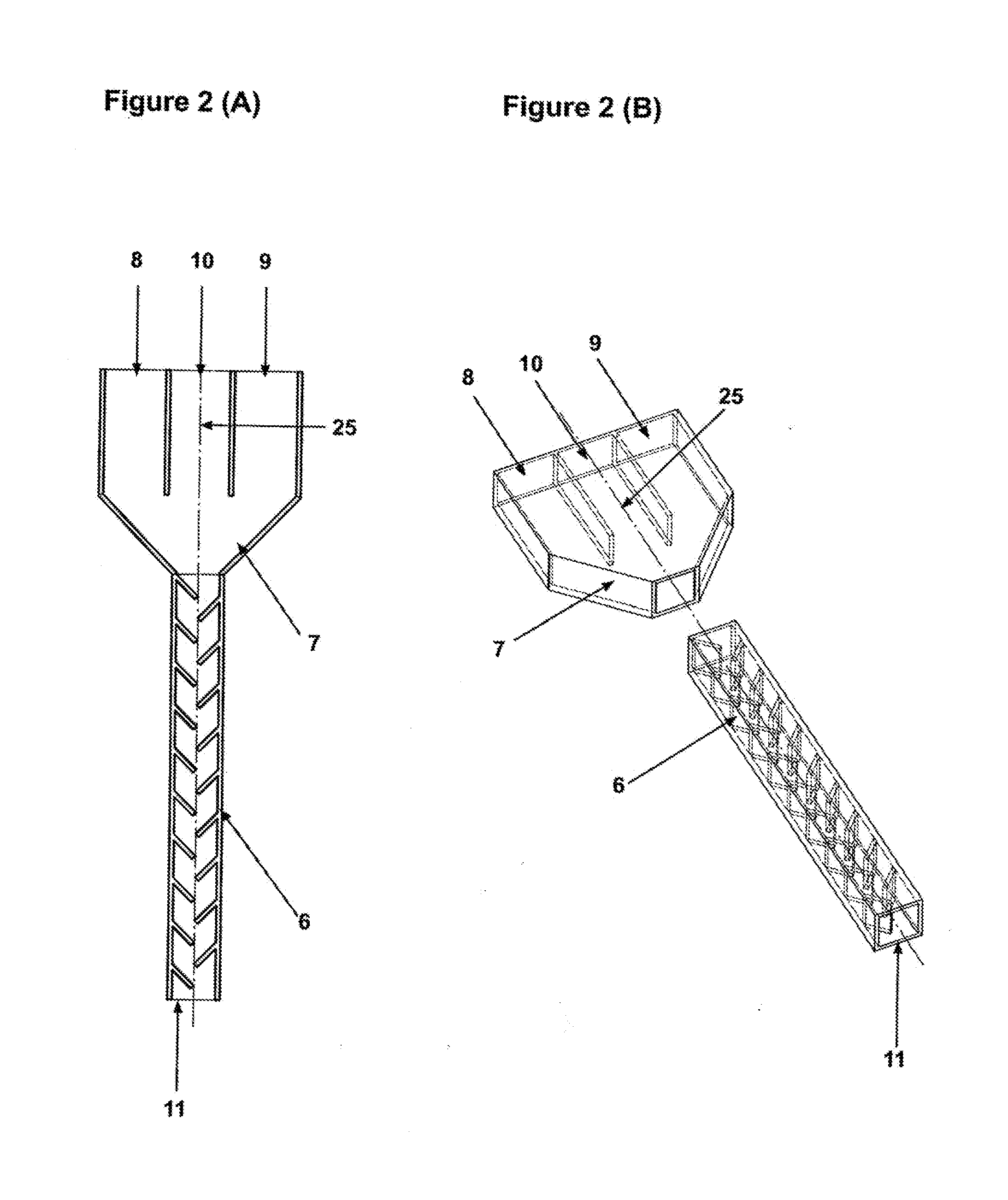System and Method for Manufacturing a Three-Dimensional Object from Freely Formed Three-Dimensional Curves
a three-dimensional object and curve technology, applied in the field of three-dimensional (3d) objects manufacturing systems, can solve the problems of inability to form objects on a special working surface plane, the need of a support structure under hanging laminae, and the requirement of mutual adhesion of cross-sectional lamina
- Summary
- Abstract
- Description
- Claims
- Application Information
AI Technical Summary
Benefits of technology
Problems solved by technology
Method used
Image
Examples
Embodiment Construction
[0065]The present invention allows forming three-dimensional objects by forming three-dimensional curves.
[0066]Referring to FIG. 1, showing the preferred technical setting for the present invention. The nozzle 1 is mounted preferably on the tool base of the robotic arm 2 with preferably six or more axes of freedom and connected with pipes 3 to a preferably constant-rate extruder 4, optional heaters 5 are mounted on the tool base of the robotic arm.
[0067]FIGS. 2 (A) and 2 (B) depict the structure of the construction of the nozzle. The nozzle consists of the nozzle connector 7 which has source material component A inlet 8, source material component B inlet 9 that are connected preferably through flexible pipes to preferably constant-rate extruder 4 with adjustable speed of extrusion shown in the FIG. 1. The nozzle connector 7 also has a dye inlet 10. The nozzle connector 7 connects to a static mixer 6 that provides mixing of source material component A, source material component B and...
PUM
| Property | Measurement | Unit |
|---|---|---|
| Length | aaaaa | aaaaa |
| Speed | aaaaa | aaaaa |
| Area | aaaaa | aaaaa |
Abstract
Description
Claims
Application Information
 Login to View More
Login to View More - R&D
- Intellectual Property
- Life Sciences
- Materials
- Tech Scout
- Unparalleled Data Quality
- Higher Quality Content
- 60% Fewer Hallucinations
Browse by: Latest US Patents, China's latest patents, Technical Efficacy Thesaurus, Application Domain, Technology Topic, Popular Technical Reports.
© 2025 PatSnap. All rights reserved.Legal|Privacy policy|Modern Slavery Act Transparency Statement|Sitemap|About US| Contact US: help@patsnap.com



